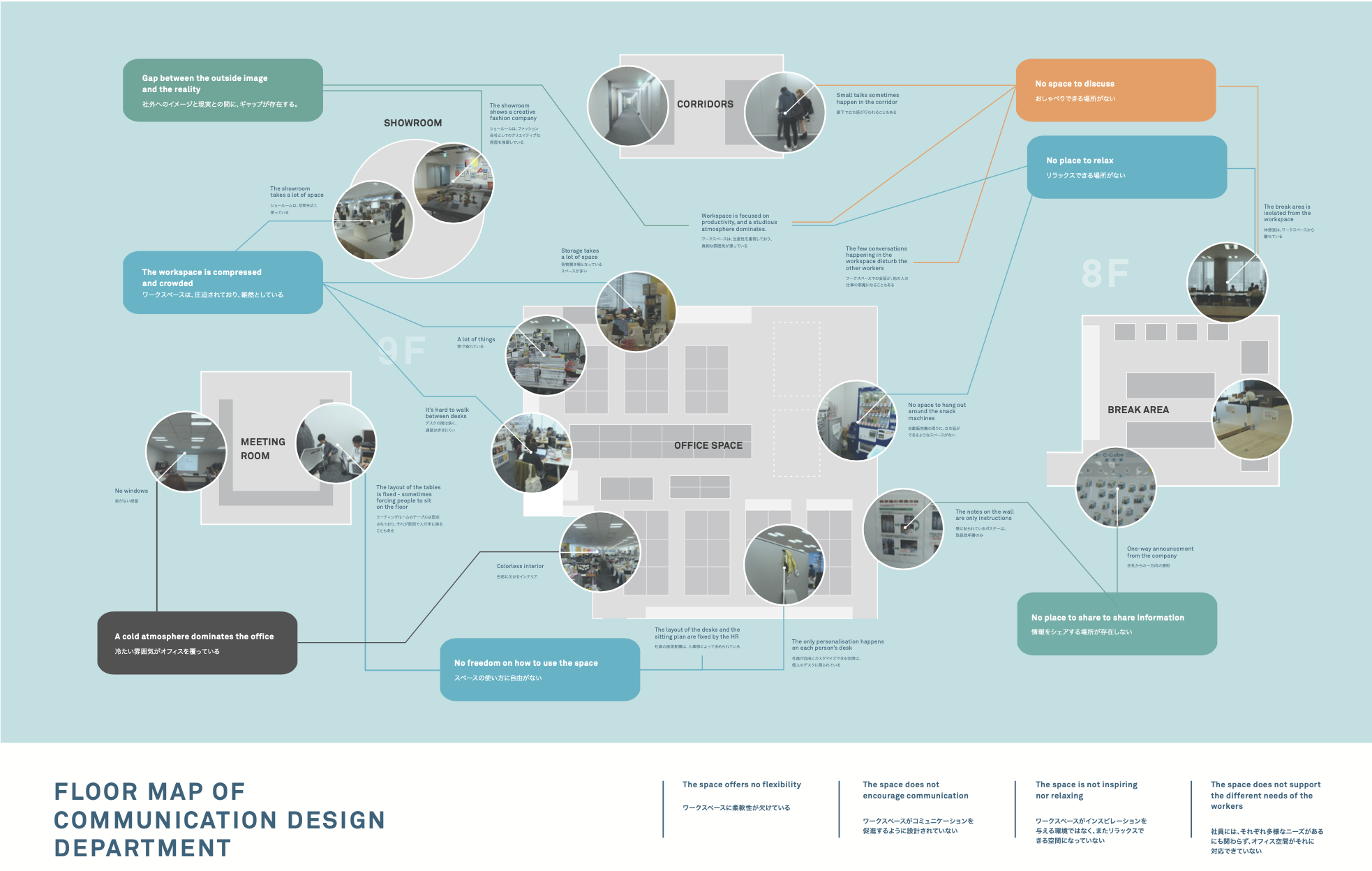Ethnography: Reinventing Corporate Vision for Japan's Fashion Leader
Ethnography | Service Design | Desk Research
Project Goal
In November 2015, Adastria, Japan's leading fashion retailer, engaged our design agency to redesign its corporate vision and work culture. The goal was to align the company's internal environment with its innovative market presence and create a dynamic, employee-centric workspace.
Contribution & Takeaways
As a Design Intern, I was deeply involved in every phase of the Adastria project, from client kickoff meetings and desk research presentations to field research and the development of research deliverables.
This project allowed me to gain invaluable experience in delivering high-quality, client-facing work under tight deadlines and high expectations. I honed my skills across a broad spectrum of tasks, including ethnographic research, participatory design, and visual storytelling. The project laid the groundwork for strong professional standards and work ethics in my UX career, emphasizing the importance of quality and attention to detail, which continues to motivate me.
Desk Research
What forms the corporate vision in the long run?
What are some of the humanistic and historical factors playing behind?
To kick off the project, our team conducted comprehensive desk research, exploring the history of Japanese work culture and Adastria's distinctive position in the industry. This foundational research guided our subsequent efforts and informed the project's direction.
Deliverable: Desk Research Poster
Our findings were compiled into a visually engaging desk research poster, which was presented to Adastria’s leadership, providing a deep understanding of the cultural and historical context that shaped their work environment.
Participatory Research
What are the existing problems in the work culture?
How can we engage employees to express their true experiences related to fulfillment, empowerment, pride, and satisfaction?
Participatory Design Our participatory design sessions encouraged employees to express their true feelings about working at Adastria, focusing on themes of fulfillment, empowerment, pride, and satisfaction. These sessions emphasized creativity as a core value.
Observation We conducted observational research to understand how employees interact with their environment, examining behaviors, use of space, and utilization of time and resources. Our focus was particularly on aspects related to creativity and communication.
Deliverable: User Interaction and Empathy Maps
Parallel to these workshops, we developed three journey map posters that visually represented the company's current and aspirational states. These maps served as powerful tools for visualizing change and sparking discussions around desired cultural shifts.




Vision Design
How might we redesign a vision for a corporation with 5000+ employees with key issues in mind?
Finally, our efforts culminated in a comprehensive vision manual, a blueprint for Adastria's future corporate culture. This manual outlined actionable strategies for fostering innovation, collaboration, and employee engagement, positioning Adastria as a leader in both fashion and workplace culture.
Final Deliverable: Vision Booklet
Challenges & Takeaways
A key challenge I faced was ensuring the accuracy and clarity of the data representation in the posters, especially given the complexity and volume of information. Initially, there was feedback from Adastria's team that some data points were misinterpreted or lacked the depth needed to capture the full picture. To tackle this, I collaborated closely with senior designers to refine the data visualization and presentation, incorporating additional context and ensuring the information was both accurate and impactful. My attention to detail and willingness to learn from feedback were essential in producing final designs that met Adastria’s expectations and effectively communicated the proposed cultural transformation.



































